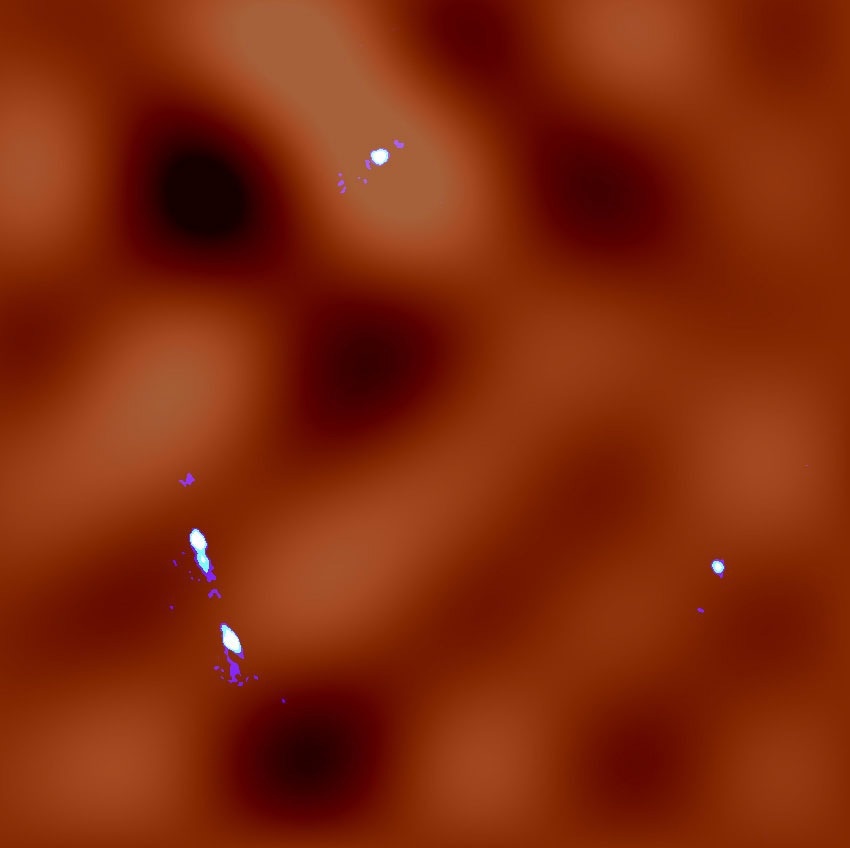New research has unveiled previously unseen levels of detail in the distribution of dark matter, reaching down to a scale as small as 30,000 light-years. These observed fluctuations in distribution offer enhanced constraints on the characteristics of dark matter.

Dark matter fluctuations in the lens system MG J0414+0534. The whitish blue color represents the gravitationally lensed images observed by ALMA. The calculated distribution of dark matter is shown in orange; brighter regions indicate higher concentrations of dark matter and dark orange regions indicate lower concentrations. Image Credit: ALMA (ESO/NAOJ/NRAO), K. T. Inoue et al.
Mysterious dark matter constitutes the majority of the matter in the Universe. It is invisible and manifests itself solely through its gravitational effects. Since dark matter has never been isolated in a laboratory, researchers must depend on 'natural experiments' to study it.
One type of natural experiment is a gravitational lens.
Sometimes, by chance, two objects at varying distances in the Universe will align along the same line of sight when observed from Earth. In such instances, the spatial curvature induced by the matter surrounding the foreground object behaves like a lens, causing the path of light from the background object to bend and creating a lensed image.
Nonetheless, achieving the necessary high resolution to detect clumps of dark matter, which are less massive than galaxies, in these natural experiments has proven to be rather challenging. Consequently, our understanding of the precise nature of dark matter remains poorly constrained.
A team of Japanese researchers, led by Professor Kaiki Taro Inoue from Kindai University, employed the Atacama Large Millimeter/submillimeter Array (ALMA) to investigate the gravitational lens system known as MG J0414+0534 within the constellation Taurus.
In this system, the foreground object does not create just one image of the background object; it generates four images due to the gravitational influence of a massive galaxy on the light.
Using their innovative data analysis method, coupled with the bending effect, the team successfully detected fluctuations in the distribution of dark matter along the line-of-sight with higher resolution than ever before, reaching scales as small as 30,000 light-years.
The new constraints offered by the noted distribution are persistent with models for slow moving, or “cold,” dark matter particles.
The research group plans to constrain even more the nature of dark matter with extra observations in the coming days.